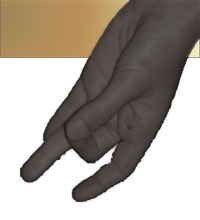I’m sure you’ve heard about all the benefits that meditation has on your health and you are probably anxious to give it a try. Maybe you even know of friends or family members who meditate regularly. Well, meditation does provide many positive benefits to your mental, physical and spiritual well being. You may also feel that the world of meditation looks overwhelming and intimidating.
I want to tell you that it doesn’t have to be that way. With just a little planning and these tips, you will be able to jump right in and start enjoying the array of benefits that regular meditation brings. The key is to get started the right way. Many individuals give up on meditation after a few unsuccessful attempts, wrongly assuming that they were not meant to meditate. The truth is that ANYONE can meditate, but it is important to set the right mood, and to practice.
That’s right, I said practice. But after you get the basics down, you will look forward to your practice time. So don’t be discouraged during your first few meditation sessions, no person can be an expert at a new activity right away. You would never try to play a piano recital after sitting at the piano for an hour. Stick with it and you will see the benefits, I promise.
It is lucky for all of us that there is plenty of help available to allow beginners to learn how to meditate quickly. There are of course many books, magazines and other publications. A great audio introduction to meditation can be found here – Meditation Basics. Here is the secret to meditation, start slowly, don’t give up, and release any expectations you have.
When you start to practice of meditation, it is very helpful to set aside a room, or part of a room, as your “meditation space”. This will be your special place just for meditation and it will help you get into a relaxed and receptive mood, making it much easier to meditate. Ideally the spot you select will be as quiet as possible. After you get the hang of meditation, you will find it much easier to meditate anywhere, quite or not. It may not always be possible to achieve total solitude and total quiet, but in the beginning it is important to choose an area with minimal distractions.
It is also a good idea to surround your meditation area with relaxing items like scented oils, aromatherapy items, soothing candles or incense. Each person will have different items in their meditation area; the key is to use those items that are special and meaningful to you. These items will act as a trigger and get you “in the mood” for meditation.
In the same vein, how you decorate your meditation area will help trigger the meditation mood. Decorating a room or part of a room for meditation doesn’t have to be expensive or elaborate, but it is try to create a comfortable space to meditate in. Maybe it is something as simple as a comfortable yoga mat, or some wind chimes hung in a window. The key is to devote these items to your meditation space, and to use them only for meditation purposes.
Now you are ready to meditate. Your next step is to listen to the audio for Beginning Meditators.
